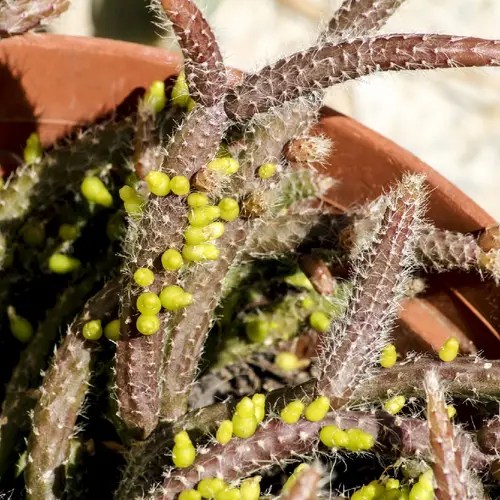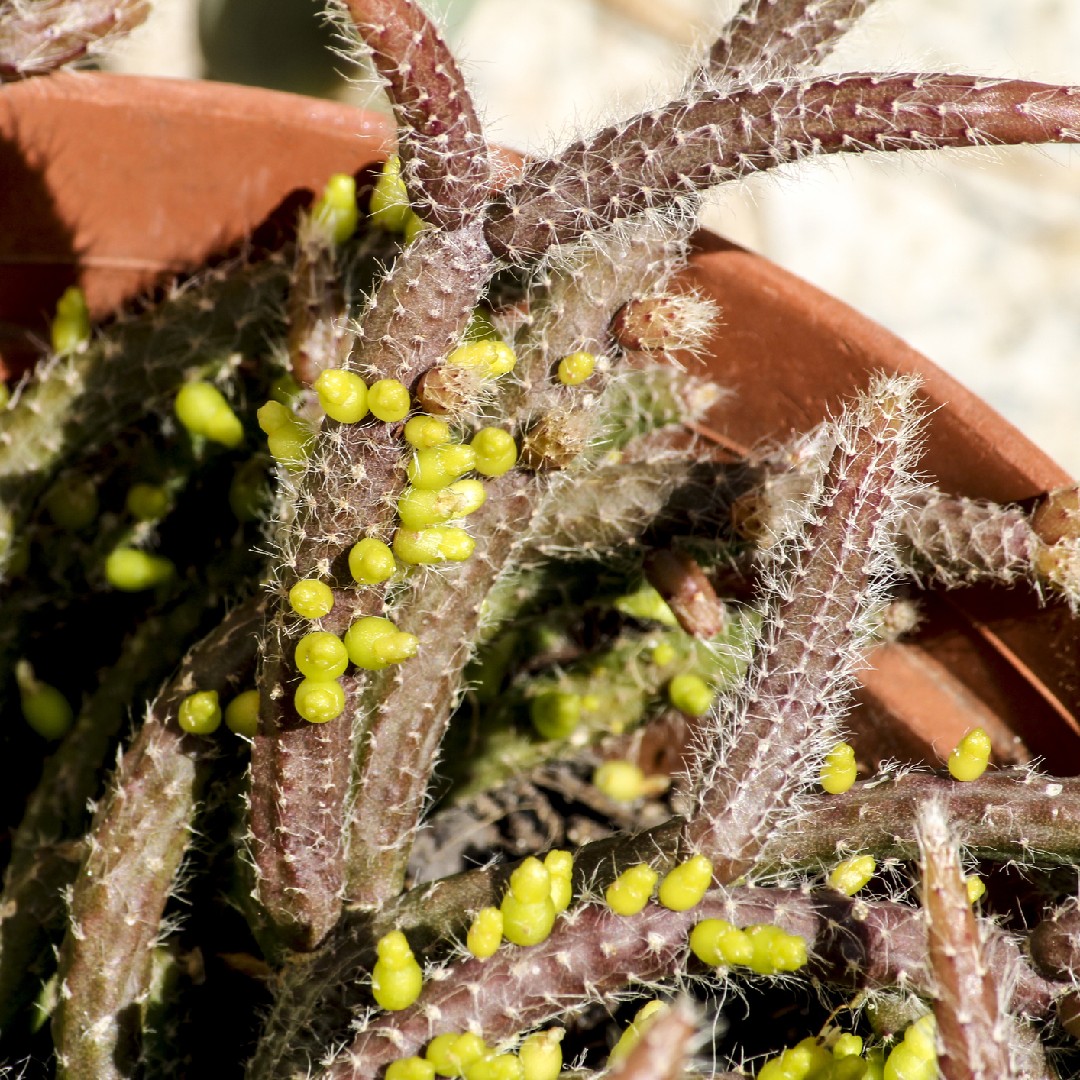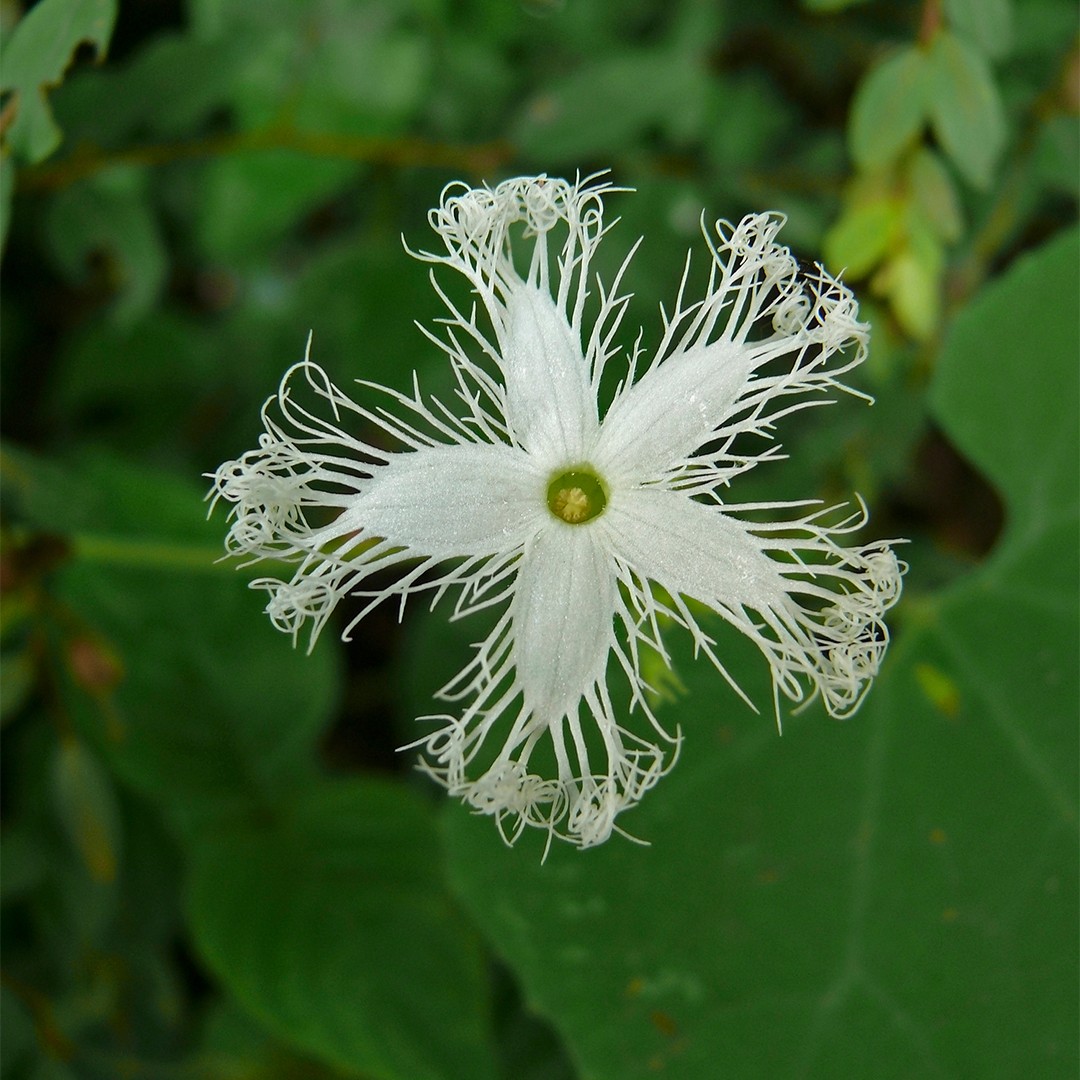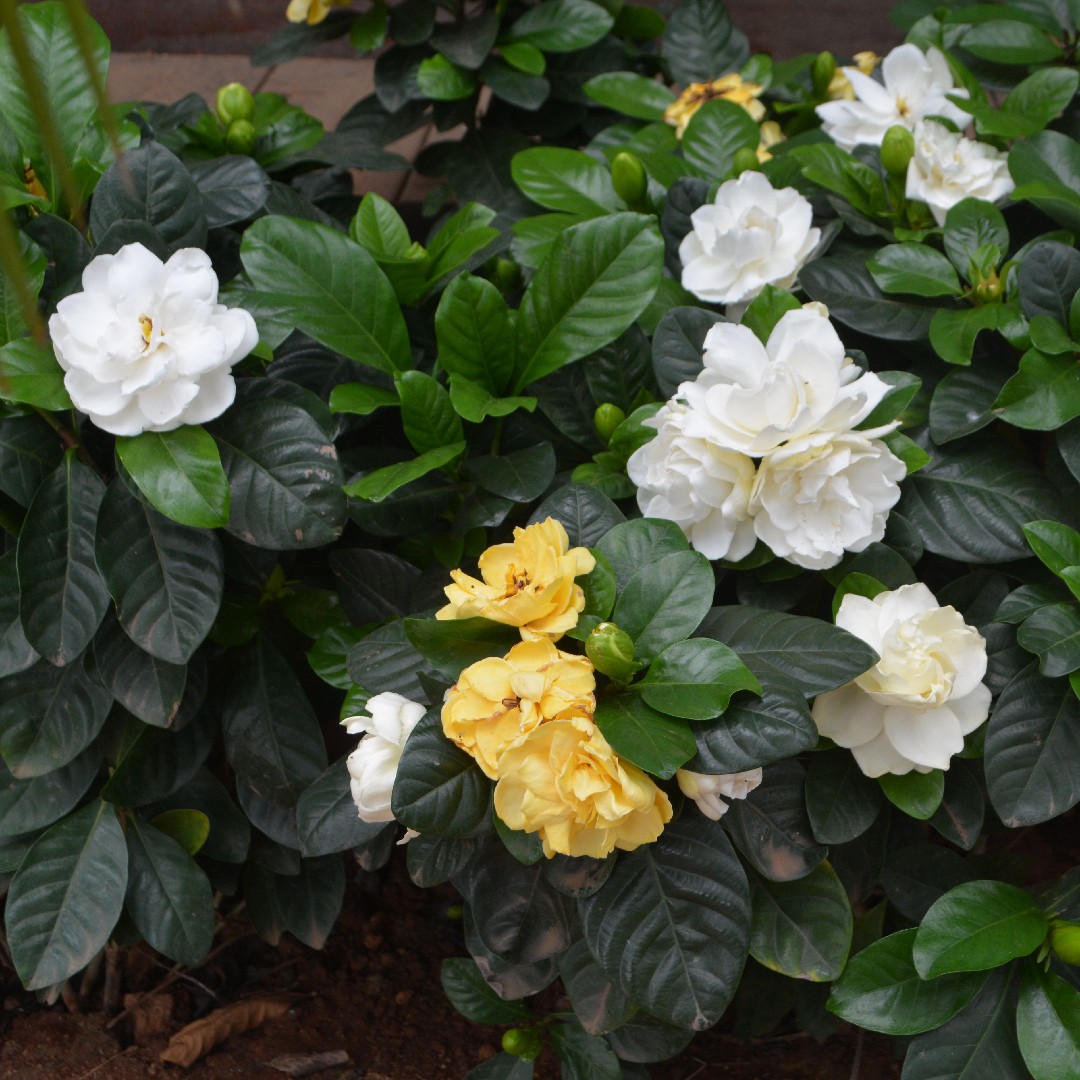What is the best way to water my Mouse tail cactus?
It's important to know various ways to water the Mouse tail cactus. Some might ask whether they should do the watering from top to bottom, or is it the opposite? According to the experts, one of the best ways to water the cactus is to start from the bottom. This will ensure that there will be enough water to reach the root of the plants. If you're starting from the top, there will not be enough saturation. The water will trickle and evaporate, and only a small amount will reach its roots.
![more]()
What should I do if my Mouse tail cactus is underwatered?
Sometimes, you might notice that even if you water it frequently enough, it will start to dry out. When you see that the flowers are beginning to wilt and there's not enough water, the issue might be in the container where they are planted. Choose a bigger one if this is the case. Buy a pot that drains easily. You will need to mix it with the right potting soil and clean sand so it will absorb more water easier. The soil that is too wet will not go well with the roots. Since this species is an epiphyte, it won't be able to handle soggy roots since it absorbs water and nutrients from the air. It's best to ensure that there's proper drainage to prevent fungal infections. When you notice the cactus is limp, you can transfer or re-pot it into fresh earth. Gently remove the soil as much as possible and keep it evenly moist. Mist the cactus frequently whenever possible. After the flowers have finished blooming, you might want to cut back on watering until you see new buds appearing. When the soil dries too much, the buds will begin to drop, so you might want to add some water but not too much. Sometimes, underwatering, which is followed by overwatering that many owners do for compensation, is quite common. These cacti are considered to be succulents. The lack of water is not noticeable until everything is too late. They show that there are issues when they begin to droop and wither. The well-intentioned plant owner will give them massive amounts of water. This is where the roots become desiccated. They become so dry that they can't take in any excess water. It will result in waterlogged plants, and the remaining roots may rot. If you notice some signs of wilting or underwatering, you can try to bring the species back to life with regular and frequent watering. However, make sure that it won't be a deluge, so you'll give the cactus a chance to regenerate and recover its roots.
![more]()
How much water should I give my Mouse tail cactus?
The Mouse tail cactus must be properly watered to keep it healthy all year round. It should be potted in well-draining soil so it would produce beautiful blooms. The amount of water that the Mouse tail cactus needs can vary. When you see that about 1/3 of the topsoil is dry, this is the best time to water them. They are thirstier than the other succulents, so watering should take place about 1x every week. Use your fingers to check if the soil is about two inches dry. If you notice that the soil is very dry on the top layer, run the water until it goes through the drainage of the pots. There should be a tray underneath to catch the extra water. After about 10 to 15 minutes, discard everything, including the excess water. The soaking method should work well with the Mouse tail cactus but don't let it sit on the water-filled pot for a long time. When the species is in its flowering stage, it's highly recommended to water it sparingly. Ideally, the best time to water them is when you notice that the leaves begin to droop. Make sure to fill the saucer of the pots with pebbles. Add water to the pebbles to add humidity to your Mouse tail cactus. The best way to understand whether it's time to water the Mouse tail cactus is to check the soil. When it's too dry, simply add water and moisture. However, don't let the pot sit in the water, especially during the winter when the soil takes a long time to dry. This can cause root rot. Know that these species can react to various seasonal changes. Watering it the correct way will mean that you should consider the climate. If you live in a dry and hot climate, the plants will need more watering, which is about twice per week. If you live in a humid area, then watering only 1x a week can work well. You should water this less frequently in the fall and winter if you want the flowers to bloom. When the pots are exposed to too much sunlight, then the moisture will dry out faster. This is when the plant needs more watering. Watering should be less if it is in a cool or humid place.
![more]()
What will happen if I overwater my Mouse tail cactus?
Sometimes, you might overwater your Mouse tail cactus, which makes it look limp or wilted. When you've neglected it for too long, give it a little drink. Continue to provide it with water in a sparing way until you see that there's slight moisture in the soil. Overwatering can cause the development of a fungal infection called white rot. The leaves tend to droop, which might result in wilting. Like any other species, the cactus can't stand overwatering or underwatering. They don't tolerate dry soil since the flowers will start dropping at the same time, and this is something that you don't want to happen.
![more]()
Should I adjust the frequency of watering my Mouse tail cactus according to different seasons?
The cold months and the hot months are not the same. The temperatures tend to drop during the winter and fall, and the soil will take longer to dry. This is when you don't need to water the succulents often. These two seasons are also the best time for the Mouse tail cactus to show its beautiful blooms. Water sparingly to maintain the health of the plant. During the months of October, stop watering when there's too much water in the soil. Resume the care in November but keep the moisture light when the temperatures are still cool. When the blooms start to appear, stop watering for about a few weeks so the plants can rest from too much moisture. These are very delicate, so when you see new growth, you can resume the watering once a week if you need to.
![more]()
Should I water my Mouse tail cactus differently when I plant it indoors vs outdoors?
Your plant's location is something you need to consider when it comes to its watering needs. When the plant grows near the window or outdoors, the air might be too dry, and the temperatures are too high. This is where you should water the plant for about 2x a week. When it's growing indoors in a humid and cool environment, it will definitely need less watering. Indirect sunlight will also have an impact since the soil does not tend to dry out faster. This is where the succulent will just be fine with once-a-week watering. However, you still need to check the soil with a moisture meter to know what it needs.
![more]()
How many hours of sunlight does Mouse tail cactus need to grow?
Mouse tail cactus can grow in partial sun, but they still require a significant amount of light to thrive. They should get at least 3-6 hours of direct or indirect sunlight each day. It is important to note that the amount of sunlight will depend on the specific species of Mouse tail cactus and their natural habitat.
![more]()
What will happen if Mouse tail cactus doesn’t get enough sunlight?
Without enough sunlight, Mouse tail cactus will become weak and may not grow properly. They may also develop etiolation (leggy growth), and the leaves may become pale or discolored. Mouse tail cactus will also be more susceptible to pests and diseases if they do not receive enough sunlight.
![more]()
What will happen if Mouse tail cactus gets too much sunlight?
If Mouse tail cactus receives too much direct sunlight, they may become sunburned, resulting in brown spots on the leaves or stems. In extreme cases, the plant may become dehydrated and wilt. It is important to monitor the amount of sunlight that Mouse tail cactus is receiving and make adjustments as needed.
![more]()
Cautions and tips
It is best to gradually introduce Mouse tail cactus to more sunlight to prevent shock and sunburn. Start by placing them in partial sun for a few hours each day and gradually increase the amount of time they spend in the sun. It is also important to provide shade during the hottest parts of the day to prevent sunburn. When watering Mouse tail cactus, it is important to avoid getting water on the leaves or in the crown of the plant. This can cause the plant to become burned or develop fungal diseases. Watering in the morning and avoiding watering in the evening can help prevent these issues. Mouse tail cactus may benefit from fertilization during the growing season to encourage healthy growth. However, it is important to use a fertilizer specifically formulated for succulent plants and to follow the instructions carefully.
![more]()
What's the ideal temperature for your Mouse tail cactus?
It is more suitable to keep the Mouse tail cactus in a particular range of conditions. Temperatures the same as 75-90℉ (25-32℃) are ideal for it. During the early winter season, the temperature shouldn't go below 75℉(25℃) for Mouse tail cactus. You can even move it indoors as it will have better protection from the extremes. Despite that, the Mouse tail cactus can survive in some extreme temperatures. Sometimes can survive in low temperatures like 50℉ (15℃), but it is not ideal. You should bring it inside if winter conditions are expected outside.
![more]()
How should I adjust the temperature for my Mouse tail cactus during different growing phases?
Mouse tail cactus has different growing phases. In the first stage, the dormant seed grows and transforms into a seedling. The dormant seeds need the appropriate conditions in their surroundings to grow as their seeds need a temperature of 75-90℉ (25-32℃) to germinate. The ideal time to make it grow vigorously is during the summer, as the most suitable temperature is around 85℉(30℃). You can adjust the placement of your Mouse tail cactus from indoors to sunlight during the hot summer months to receive enough sunlight.
![more]()
How can I keep my Mouse tail cactus warm in cold seasons?
It's advisable to bring your Mouse tail cactus indoors to avoid the harsh winter conditions. People opt to buy different types of grow light to provide enough sunlight for the plant. However, if your home is not extremely dark, it is not essential to buy these lights. Keep your plants where they will get the most sunlight possible. There should be sufficient light to keep the Mouse tail cactus thriving in winter. If you have several Mouse tail cactus, then keep them rotating so that they all receive enough sunlight. Avoid placing your Mouse tail cactus too close to the window if you live in northern areas with frigid weather. The cold may be extreme to them, due to which they might get damaged.
![more]()
What happens to my Mouse tail cactus when the temperature is too high or too low?
Your Mouse tail cactus can grow better in summers and do better in warm temperatures 90℉(32℃) but you should protect it from temperature extremes during hot climates. However, during winter, it is better to keep your plant dry. Mouse tail cactus do well in temperate climates having temperatures between 75-90℉ (25-32℃). However, some gardeners can expose their Mouse tail cactus to extreme temperatures causing stress in their plants. While high temperatures ranging between 90℉ and 95℉(32-35℃) can help maintain the deep colors for Mouse tail cactus, you must be careful when trying out such experiment. During the hot summer season extremely high temperatures can burn your Mouse tail cactus damaging their stem and root system. During the hottest time of the day (when the temperature is extremely high), consider relocating your plant to a shaded place or protect them with a shade cloth.
![more]()
How should I adjust the temperature for my Mouse tail cactus in different seasons?
In summers, high temperatures make the growth of Mouse tail cactus slowed down to survive in too hot a temperature. As the cooler periods and rainfall begins, the Mouse tail cactus starts growing. If the place you live in has hot summers and warm winters with more rainfalls, you aren't required to change anything. However, if you live in a place with cold winters, you should let your Mouse tail cactus grow more in summer and rest in winter. It is because there is not enough sunlight for Mouse tail cactus to grow in winter. You can help your Mouse tail cactus enter dormancy if you live in a place with cold temperatures by decreasing the temperature to 50℉ to 75℉ (15℃ to 25℃).
![more]()
How can I keep my Mouse tail cactus warm without a heating pad?
To withstand freezing temperatures outside, as a solution, you can insulate your Mouse tail cactus with frost cloths, row covers, tents etc. You can also mulch your Mouse tail cactus with small rocks. Mulching the Mouse tail cactus soil will provide warmth to your plants and will not let you over-water the plant.
![more]()
How can I protect my Mouse tail cactus from temperature damage?
Mouse tail cactus is adapted to sunlight and requires sufficient sunlight for healthy growth. You can place it in an outdoor environment without any shade. However, Mouse tail cactus shouldn't be kept for a long time in the blazing sunlight in the hot summer when it requires to be put under shade so that extreme temperature doesn't damage them. If the winter is extreme in our area, you must keep your Mouse tail cactus indoors to keep them away from frost.
![more]()
What are the tips and precautions for keeping my Mouse tail cactus at the right temperature?
Increase water and fertilizer during the growth of plants in spring and summer. Prevent your plant from receiving too much sunlight. To cool plants, spray water around them when the temperature is exceptionally high but don't put water on their stem.
![more]()
Why do I need to fertilize my Mouse tail cactus?
Fertilizing Mouse tail cactus adds nutrients to the growing medium. Even though it does store water and nutrients, applying plant food during the growing season helps support healthy growth. Fertilizing can also encourage mature specimens to produce blooms in the growing season.
![more]()
When is the best time to fertilize my Mouse tail cactus?
While all plants benefit from additional nutrients, Mouse tail cactus only needs a light dose of fertilizer during the growing season. The frequency of fertilization should be 1-2 times a year. It is suggested to fertilize your Mouse tail cactus in the spring and autumn, but not in winter&summer when it is dormant. Be careful with repotted plants, you will want to reduce the amount of fertilizer. It’s also a good idea to wait a couple of months after repotting before you start applying fertilizer.
![more]()
When should I avoid fertilizing my Mouse tail cactus?
Like most plants, Mouse tail cactus has a dormancy period and it is when you want to stop the applications of fertilizer. In the summer and winter, the plant ceases growing, and it is when you want to stop applying fertilizer. It’s also a good idea to cease fertilizing for the first couple of months after repotting in the spring.
![more]()
What type of fertilizer does my Mouse tail cactus need?
It’s best to use a liquid plant food formulated for succulents and cacti when you are fertilizing Mouse tail cactus. Dilute the fertilizer with water to half-strength. You do not want the fertilizer building up in the soil. Apply the fertilizer to the base of the plant and water thoroughly, ensuring any excess moisture drains from the container or seeps into the ground.
![more]()
How do I fertilize my Mouse tail cactus?
It is easier to use liquid plant food when you are fertilizing Mouse tail cactus, but granules are another option. Follow the directions on the packaging, making sure you dilute liquid fertilizers to half-strength. Whether you are using granules are liquid plant food, always apply it to the soil. Cover the granules with a thin layer of soil and water regardless of the type of plant food you are using.
![more]()
What happens if I fertilize my Mouse tail cactus too much?
Over-fertilizing Mouse tail cactus is a common problem with new and experienced gardeners. The plant has low nutritional needs and it’s easy to apply a little too much fertilizer. Over-fertilizing Mouse tail cactus can burn the plant’s sensitive roots resulting in its slow decay. Without its root system, the plant cannot absorb nutrients and moisture.
![more]()




























 Watch how sunlight gracefully moves through your garden, and choose spots that provide the perfect balance of light and shade for your plants, ensuring their happiness.
Watch how sunlight gracefully moves through your garden, and choose spots that provide the perfect balance of light and shade for your plants, ensuring their happiness. 








